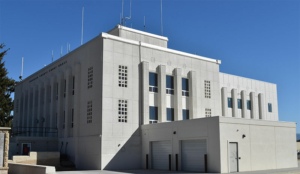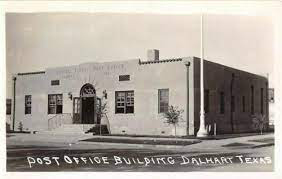Stuck at home during the pandemic, I began sorting through storage boxes, some not opened since my mother passed away in 1993. I came upon “Memories of the Civilian Conservation Corps,” my father’s 1937 yearbook from his time in the Corps, opening a window into the history and experiences of those who were part of the New Deal’s popular youth program.

The author’s father, William Johnson, Courtesy, Marjory Johnson Wood
My father was a proud member of the CCC, signing on in Cusson, Minnesota, in 1933 at age 21, and serving until 1937. His yearbook describes the adventures of the men of Company #723.
Company #723’s was initially assigned to the Kabetogama State Forest in northernmost Minnesota. He arrived at Vermilion River Camp S94 on January 4, 1934. Among his many assignments were Company Shoemaker, Tool Ensign, Leader, Saw Machine Operator, Tractor Operations Leader, Tool Supply Sergeant and State Toolman.

CCC OATH Courtesy, Marjory Johnson Wood
Camp life was far different from anything he had ever experienced. Many of the men were away from home for the first time and holding their first steady jobs. In the early years of the Corps, there were five applicants for every opening. Once admitted, successful candidates like my father took the oath of enrollment followed by two weeks of training at Fort Snelling, Minnesota.
Life in camp provided good meals, hard work and a regular schedule. Enrollees worked under locally experienced men, (LEM’s) and received on-the-job training. Since they were run by the U.S. Army, CCC camps looked and operated like military bases. Camp life meant close association with 200 other men of diverse backgrounds, skills and temperaments and had a profound effect on their health and attitudes from the work, the activity and comradery.

Courtesy, Marjory Johnson Wood
Enrollees had nicknames for almost everything, including each other. They dubbed the U.S. Army, “Mother,” because it fed, clothed, disciplined and sheltered them. When enrollees came down with communicable illnesses such as strep throat, measles or chicken pox, often the best option was to quarantine the infected camp until the disease had run its course.
In April 1934, Company #723 received orders to move to the fairgrounds in New Caledonia—a distance of 388 miles. Work at the new camp was in quarrying rock, building dams, terracing farms and planting trees. The men lived in tents equipped with Sibley tent stoves dating from the Civil War. Somehow, the men withstood the cold and the smoke from those primitive stoves.
By November 1934 Company #723 was on the move again— a 400-mile ride from New Caledonia to Orr, Minnesota, in a convoy of thirty trucks. My Dad’s yearbook says, “There is not a man in that convoy who will ever forget the extreme discomfort of riding in open trucks that distance in the November weather we were blessed with.”

Company 723-CCC-Orr, Minnesota, February 9, 1934. Courtesy, Marjory Johnson Wood.
In January 1935, on a 20-degree below-zero night, a contingent of 135 rookies arrived in Orr by train and were transported in 21 trucks to their camp. It was a tough initiation. The influx put the camp at 295 men. The school house and recreation hall were so crowded with cots that a side camp was opened at Crane Lake where fifty men volunteered to isolate themselves. According to my father’s yearbook, the camp was in a beautiful spot and the enrollees seemed to enjoy their isolation.

Cartoon from 1937 CCC yearbook. Courtesy, Marjory Johnson Wood
In May that year, the equipment was loaded to a special train and the men embarked for their new destination 350 miles south in Lewiston. In October, Company #723 moved again, two blocks away to a new camp still under construction. The wiring at the new camp would not be completed for a month. The enrollees worked on their camp newspaper, read books and played pool by candlelight. One man recalled, “When the lights finally came on, we spent some weary hours scraping tallow off everything that a candle could possibly stand on.”
For holidays, especially Thanksgiving and Christmas, enrollees got special meals that camp newspapers described as like “mother used to prepare.” Though liquor was not allowed in camps, enrollees got a bottle of beer with their holiday meal.
My father was discharged from the CCC on September 13, 1937.

Courtesy, Marjory Johnson Wood
During its 9-year existence (1933-1941), 4,500 CCC camps were built in every state and some territories. Fifty-one camps operated in Minnesota, employing 86,000 young men. The Minnesota CCC’s accomplishments included 650,000 trees planted, 45,000 miles of telephone lines built, 40,000 miles of fire breaks installed, 2,202,000 dams constructed and 32,500 acres of public campgrounds developed. The men also maintained 91,000 miles of telephone lines, 30,000 miles of fire breaks and 163,000 miles of trails and roads.
LEARN MORE ABOUT THE CCC IN MINNESOTA
Marjory Johnson Wood is a native Minnesotan living in Aurora, Minnesota. She is an artist, illustrator and author of two books of Scandinavian folk tales. Her article originally appeared in The TimberJay, a newspaper in Tower, Minnesota. An extended version of this article can be found
here.











































